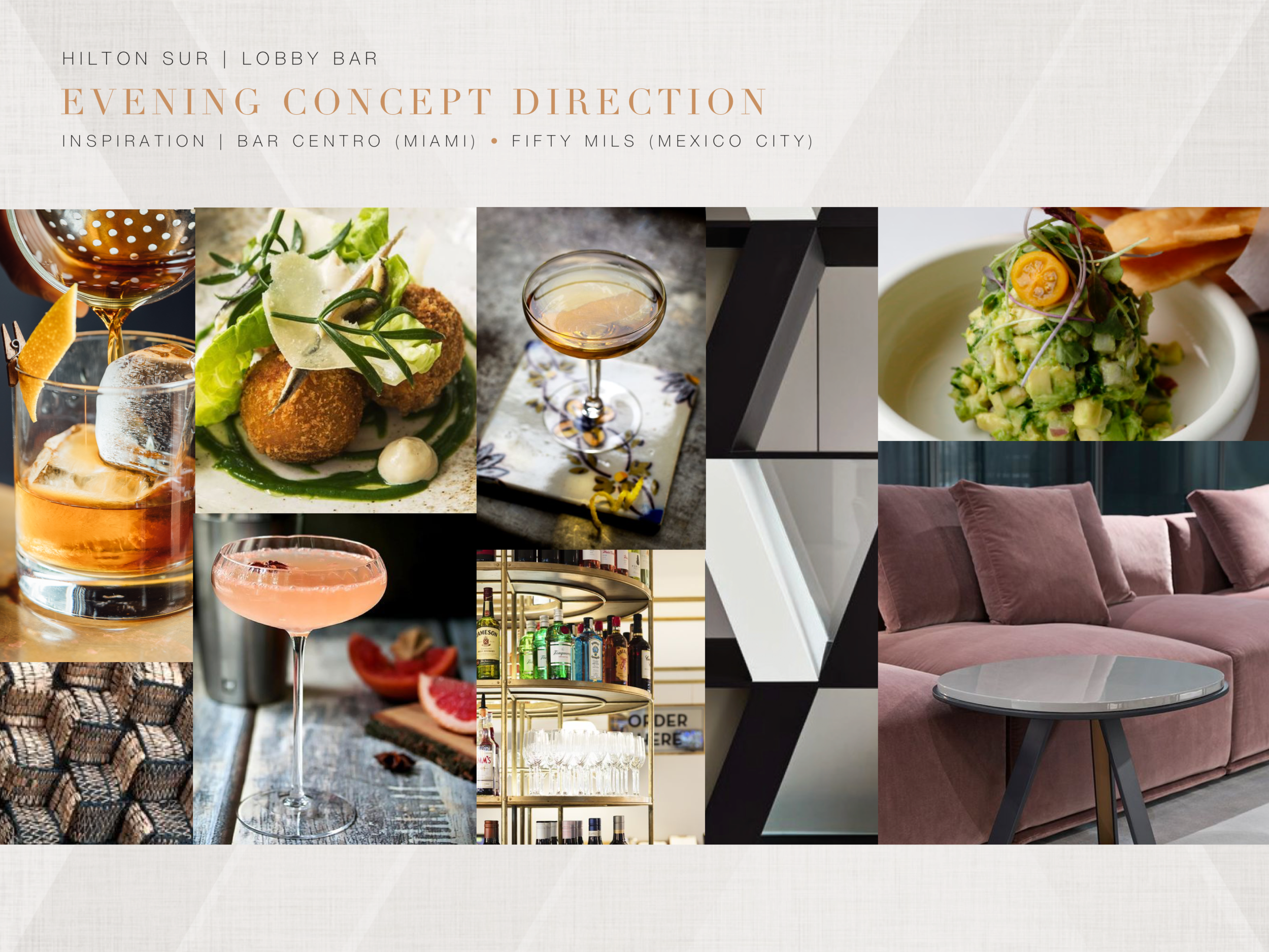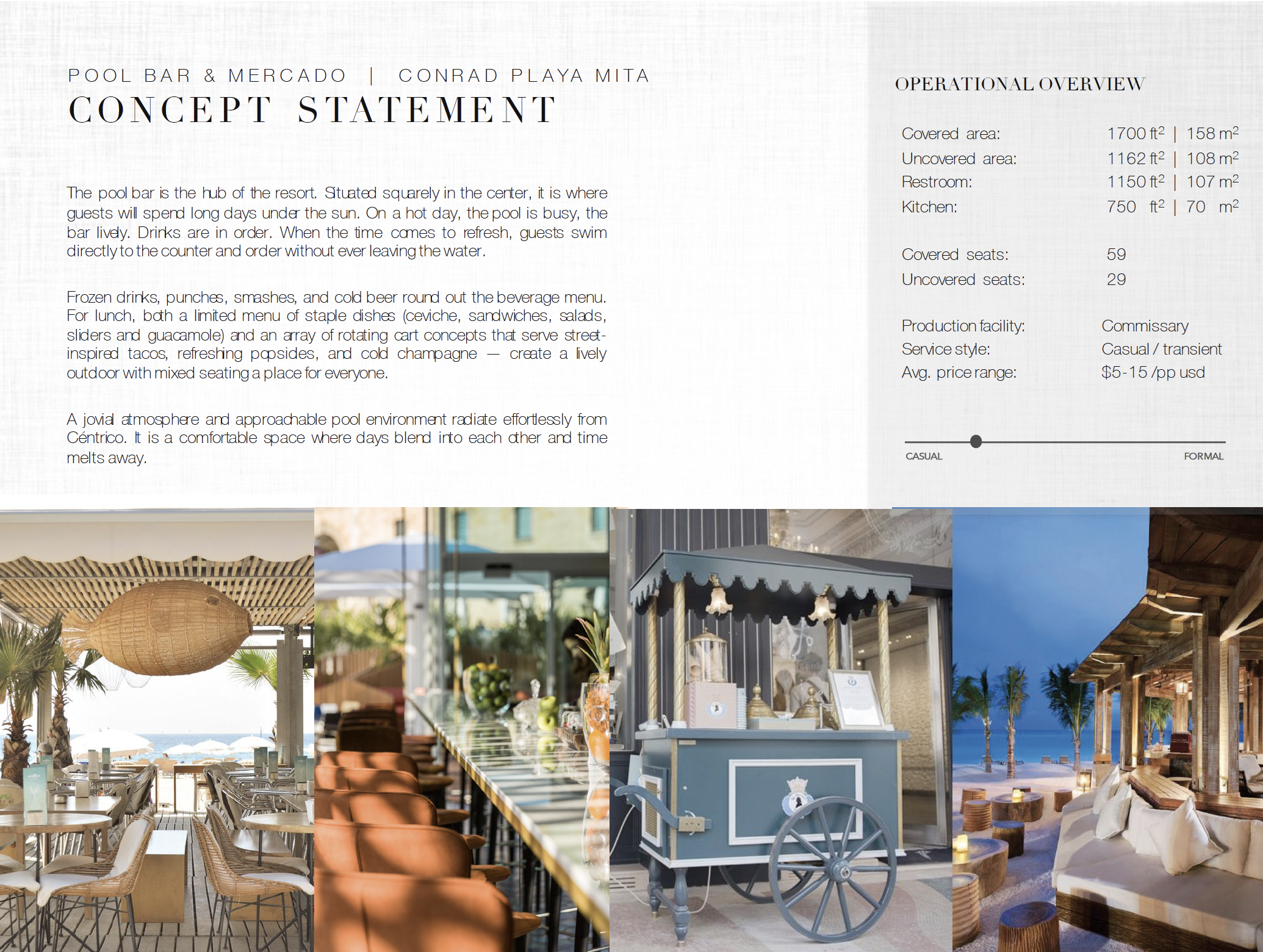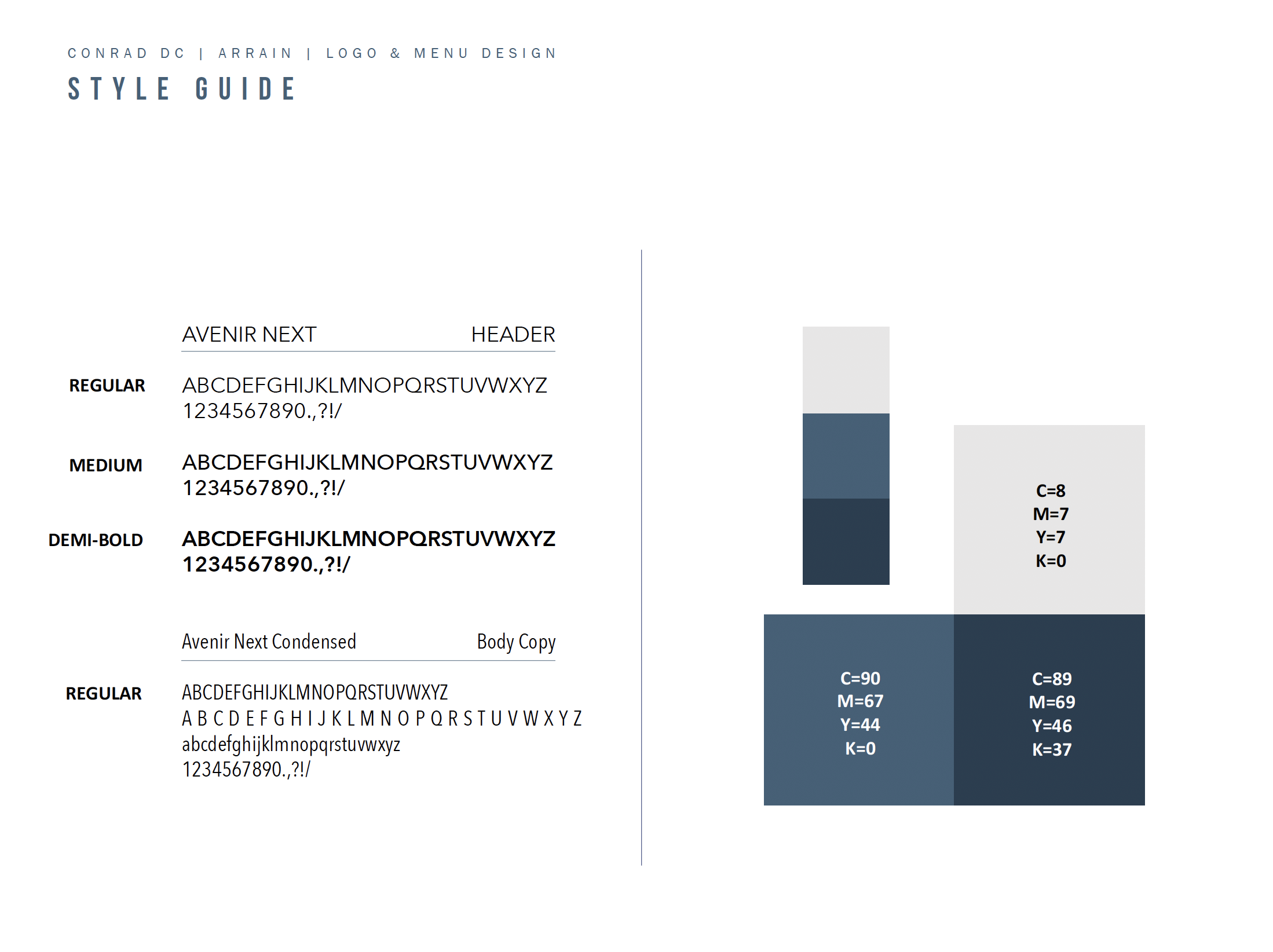RESTAURANT DEVELOPMENT
Tasked with creating memorable guest experiences from Canada to Argentina, our team takes into consideration the entire sequence chain from environment aesthetics and branding down to sensory experiences [tablescape, taste, and sound]. Sitting on a collaborative and multi-disciplinary team of chefs, restauranteurs, and hotel operators, my role is often to act as the design lead, bringing holistically immersive prototype and bespoke concepts to the table.
Now how do we tell the story?
THE RESEARCH
Prior to conceptualizing willy-nilly, we perform in-depth market research so we can analyze regional trends and identify opportunities for service touchpoints that elevate user experience in our spaces. I push to ensure that the research itself becomes another element or opportunity for storytelling. Through compelling visuals and thoughtful content, I want our stakeholders to walk away with a clear vision of the ethos and vibe that will surround our guests at any given destination.
In California, for instance, I worked to uncover and craft a strong narrative about the region that diverged from the well-traveled road, such as the story of Sonoma and Napa's vineyards having been built on the backs of Chinese immigrants.
PROGRAMMING & CONCEPTING
Once we complete our market research, our team's first step on any project is to create a black and white framework for how the different F&B spaces in a hotel will flow and function as well as create a diverse offering for users. Is there enough support behind the scenes to create a seamless guest-facing experience? Are we providing signature moments and features that fill a need in this given location and that will engage our customers and the community? These questions are just a few examples of what we ask ourselves and also of our collaborators in the Brand, Development, Operations, and Design departments.
After we still distill our initial ideas, it's time to formulate an immersive document to tell the story. If we had a page - just one - to draw in our audience, how might we weave a visual story with subliminal cues and a balance of content and color to make one perceive taste, smell, and touch all at once? Pictures may be worth a thousand words, but being able to eloquently translate our research and ideas into a written concept overview is also a crucial step in the process.
IT'S ALL IN THE DETAILS
Focusing in on guest experience beyond what they're sitting on and what they're eating, the most important aspects of any service is how does it make users feel? What are the touchpoints they remember long after they've left? Given servers are one of the most important aspects to the experience of a restaurant, we take care to craft how they should interact with guests and what they should wear to further re-inforce the concept and feel of the space. We also consider what guests are holding in their hands, from material to weight, and what that communicates so that tablescape itself becomes an instrument in the overall symphony.
Aside from the overall space, additional touchpoints need to be considered on a more micro-level to bring an added sense of delight for an overall memorable experience. In Jalisco, I proposed carved citrus garnishes to ensure the story and culture of the region bled through to the very end. Additionally, I considered moments that can activate the space and encourage a social experience while reflecting regional traditions, as seen in the cazuela bowl proposed for shared cocktails.
To drive a concept home, we will also mock-up full menus to gain a sense of what the guest will experience once they're seated and looking over what to order. We'll study the visual design of the menu and details in the materiality, as well as components of the offerings themselves.
Below are a few examples in depth.










































